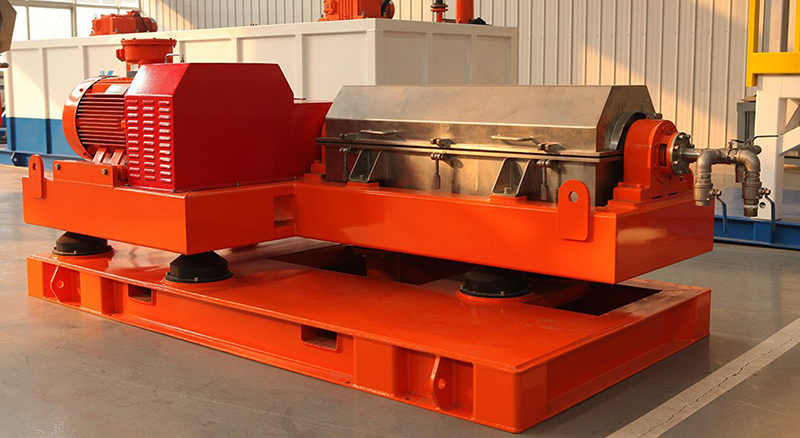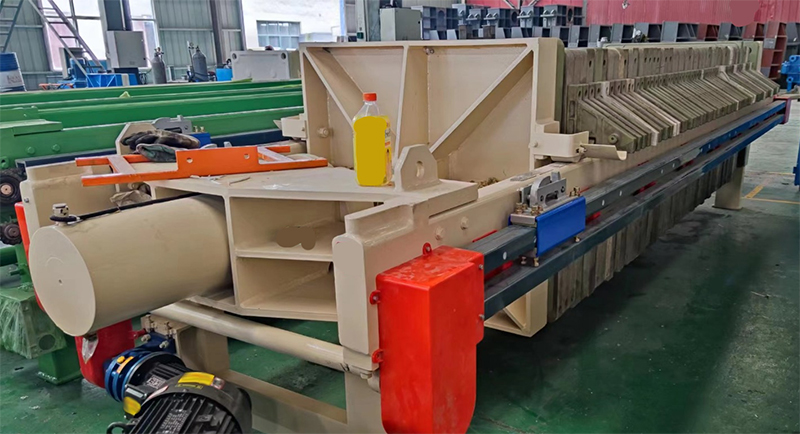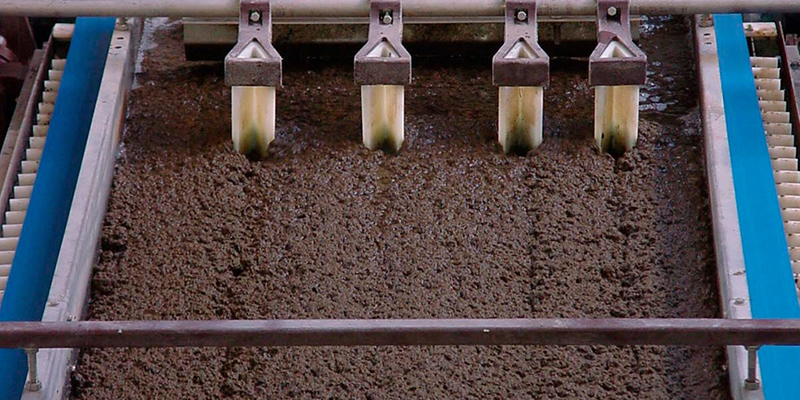Dewatering in wastewater treatment refers to the process of separating water from sludge or solids, resulting in a reduction of moisture content and the production of a more manageable waste material. This step is essential in the treatment of wastewater, as it reduces the volume of sludge, making it easier and more cost-effective to transport, handle, and dispose of, while also enabling the recovery of water for reuse or discharge.
Several methods are employed for dewatering in wastewater treatment, each with its own advantages, limitations, and applicability depending on factors such as the characteristics of the sludge, the scale of the treatment facility, and the desired level of dryness. Some common methods of dewatering include:
Centrifugation
Centrifugation involves the use of centrifugal force to separate solids from liquids. In this process, wastewater sludge is introduced into a rapidly rotating drum or bowl. The centrifugal force causes solids to settle against the bowl wall while the liquid phase, often referred to as centrate, is expelled through ports. Centrifuges are valued for their high throughput and ability to produce dry cake solids, making them suitable for a wide range of applications.

Belt Press Dewatering
Belt press dewatering utilizes a series of rollers and belts to squeeze water out of sludge. The slurry is fed onto a porous belt, which carries it through a series of rollers under tension. As the belt travels, water drains through the pores, leaving behind dewatered sludge. Belt presses are favored for their continuous operation, low energy consumption, and adaptability to different sludge types.

Filter Press Dewatering
Filter press dewatering employs a series of filter plates and cloths to separate solids from liquids under pressure. The sludge is pumped into the filter press, where it is distributed between alternate plates and frames. Pressure is then applied, forcing water to pass through the filter cloths while retaining solids within the chambers. Filter presses are known for their high solids capture efficiency and versatility in handling various sludge characteristics.

Drying Beds
Drying beds, also known as sludge drying beds, utilize natural evaporation and drainage to remove water from sludge. Sludge is spread onto beds with permeable surfaces, allowing water to drain through while exposing the sludge to sunlight and air. Over time, moisture evaporates, and solids gradually dry out, forming a crust that can be scraped off and disposed of. Drying beds are simple, low-cost dewatering solutions suitable for small-scale applications.
Dissolved Air Flotation (DAF)
Dissolved Air Flotation (DAF) is a flotation process that separates solids from liquids using microbubbles. In DAF systems, air is dissolved under pressure and released into the wastewater stream. The microbubbles attach to solids, causing them to float to the surface, where they can be skimmed off. DAF is effective for removing suspended solids and fats, oils, and greases (FOG) from wastewater, making it a valuable pre-treatment step for dewatering.

The Advantages of Dewatering in Wastewater Treatment
Volume Reduction
Dewatering significantly reduces the volume of sludge or solids generated during wastewater treatment. By removing water content, the volume of sludge is reduced, making it easier and more cost-effective to handle, transport, and dispose of the waste material.
Improved Handling
Dewatered sludge is typically easier to handle compared to slurry-like or liquid sludge. The reduction in water content results in a more solid and stable material that can be transported using conventional equipment such as trucks or conveyor belts, minimizing the risk of spills and leaks.
Reduced Transport Costs
The decreased volume and increased dryness of dewatered sludge result in lower transportation costs. With reduced volume, fewer truckloads or shipments are required to transport the sludge to disposal sites or further treatment facilities, leading to savings in transportation expenses.
Resource Recovery
Dewatering facilitates the recovery of water from the sludge, which can be recycled and reused within the wastewater treatment plant or discharged back into the environment with reduced environmental impact. Recovering water also conserves valuable freshwater resources and reduces the demand for freshwater intake.
Enhanced Treatment Efficiency
Dewatering can improve the efficiency of downstream treatment processes by concentrating solids and reducing the organic content of the sludge. This can lead to better performance and lower operating costs for processes such as digestion, incineration, composting, or land application of sludge.
Compliance with Regulations
Many environmental regulations and guidelines require wastewater treatment plants to properly manage and dispose of sludge generated during the treatment process. Dewatering helps meet regulatory requirements by producing a more stable and less environmentally impactful waste material that can be safely handled and disposed of in accordance with regulations.
Odor Reduction
Dewatering can help reduce the unpleasant odors associated with untreated or liquid sludge. By removing water from the sludge, dewatering reduces the surface area available for microbial activity and the production of odorous compounds, resulting in less odor emissions during handling and storage.
Flexibility and Adaptability
Dewatering processes offer flexibility and adaptability to different types of sludge and varying treatment conditions. Various dewatering methods, such as centrifugation, belt press dewatering, filter press dewatering, and drying beds, can be tailored to suit specific sludge characteristics, treatment goals, and facility requirements.
In conclusion, the dewatering process is an indispensable component of wastewater treatment, offering a multitude of benefits that enhance operational efficiency, environmental sustainability, and regulatory compliance. By reducing volume, improving handling, facilitating resource recovery, and mitigating environmental impacts, dewatering plays a pivotal role in optimizing the overall effectiveness of wastewater treatment systems. As we continue to innovate and refine dewatering techniques, we move closer to achieving our collective goal of safeguarding water resources and promoting a cleaner, healthier environment for future generations.

